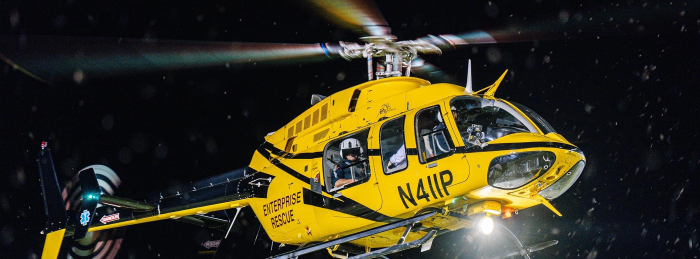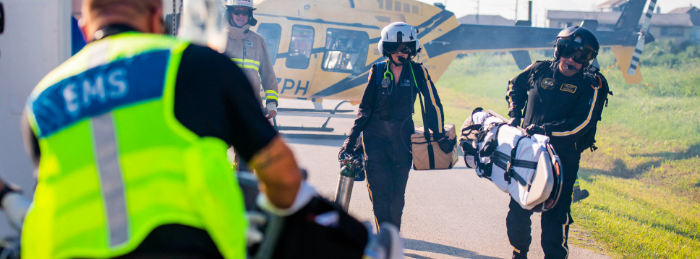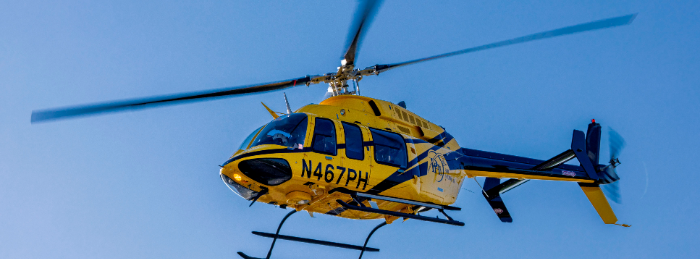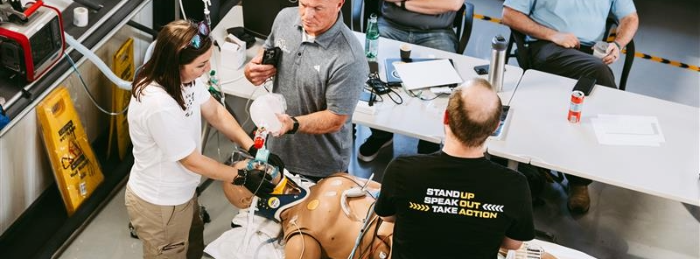Rural Resilience: How Air Medical Services Strengthen Small-Town Healthcare Access
Across the United States, rural communities face a uniquely daunting healthcare landscape. Unlike urban counterparts with nearby hospitals and specialists, millions in rural areas confront significant barriers: long distances to medical facilities, even longer waits for specialty care, and hospitals that have shuttered or pared down services. These realities don’t just inconvenience—they threaten lives. In emergency scenarios, seconds turn into minutes, and minutes into outcomes.
In these critical moments, PHI Air Medical serves as an indispensable lifeline. By providing rapid, advanced medical transport, PHI connects patients in the country’s most remote corners to life-saving care that would otherwise be out of reach. This blog delves into how PHI’s air medical services underpin rural healthcare systems, helping to fill the widening gaps and improve survival chances when it matters most.

The Growing Rural Healthcare Challenge
In recent decades, a troubling nationwide trend has been seen: rural hospital closures. Since 2010 alone, over 130 rural hospitals have permanently shut their doors, and many more operate under financial strain, threatening future closures. This surge disproportionately affects rural and low-income populations, amplifying the healthcare disparities long documented by researchers and policymakers.
With fewer local hospitals, patients needing intensive care or specialized treatments often face arduous journeys—sometimes traveling 50 to 100 miles or more. For time-sensitive emergencies like strokes, heart attacks, or major traumas, these distances can be deadly. The National Rural Health Association reports that closures increase travel times for emergency patients by an average of 30% or more, exacerbating rural mortality and morbidity rates.
Compounding this, the healthcare infrastructure in many rural communities struggles with staffing shortages, aging equipment, and limited specialty services, further straining patient access. As the Health Affairs journal explains, these systemic challenges create a precarious environment where rural residents sometimes must choose between delayed care or evacuation to distant hospitals.
PHI Air Medical: Bridging the Distance with Advanced Care
PHI Air Medical stands at the forefront of efforts to bridge this healthcare divide. Its network of strategically placed bases across rural America enables rapid deployment of helicopters equipped to deliver intensive care unit (ICU)-level treatment en route to hospitals.
PHI’s services offer multiple pivotal contributions:
- Expedited Transport: Air travel dramatically reduces transport times, often slashing what might be hour-long ambulance trips to under 30 minutes. This is not just convenience but critical survival time saved. A study in the National Journal of Emergency Medicine highlights an average 30-60 minute reduction in hospital arrival times for rural emergency air transports, translating to better outcomes in stroke and trauma care.
- Onboard Clinical Expertise: Each flight includes highly trained flight nurses and paramedics skilled in advanced cardiac care, trauma management, pediatric emergencies, and more. Equipped with ventilators, monitors, and blood products, these air medical teams serve as mobile ICUs.
- Integration with Local Emergency Services: PHI’s close collaboration with rural EMS and hospitals creates a unified response ecosystem. This coordination ensures seamless handoffs and maximizes efficiency, reducing duplication and response delays.
PHI Air Medical’s extensive network of strategic partnerships—including Ascension St. Vincent, Indiana StatFlight, CHRISTUS Flight For Life and Medical City Healthcare in Texas, Valley Health and Inova in Virginia, Ricoh Aviation in New Mexico, and University Hospitals and Cleveland Clinic in Ohio—exemplifies collaborative efforts to extend advanced air medical capabilities to underserved and rural regions. These alliances ensure that patients across diverse geographies receive timely, expert interventions when every minute counts.
The Human Side: Critical Moments Saved
While patient confidentiality prevents sharing specific cases, PHI’s impact is felt daily through countless success stories. Consider a rural farmer exhibiting stroke symptoms far from the nearest hospital with specialized neurologists. PHI’s swift airlift bypasses geographic hurdles, linking the patient to a stroke center where clot retrieval is possible within window periods, potentially preventing lifelong disability.
Similarly, pediatric emergencies in rural regions, often hampered by a lack of specialty care, receive life-saving interventions during air transport, providing vital stabilization en route to children’s hospitals equipped to handle complex injuries.
These scenarios embody the life-saving potential of combining aviation with critical care medicine and underscore why such services are vital in rural America.
Enhancing and Supporting Local EMS
PHI Air Medical complements the efforts of volunteer-based and small-town EMS providers, often overwhelmed by the vast territories and extended response times. Through joint trainings, communication protocols, and disaster preparedness exercises, PHI enhances local capabilities, fostering a resilient emergency network.
These relationships reduce patient transport times, alleviate the burden on limited hospital resources, and improve survival rates for conditions where timely care is vital to preserving brain and heart health.
Local Bases: Anchoring Coverage and Rapid Response
The strategic placement of PHI’s rural bases is more than logistical—it’s a lifeline. Staffed with pilots experienced in regional terrain, such as mountainous passes or expansive farmlands, and medical crews trained in rural emergency health, these bases enable 24/7 readiness.
Helicopters are purpose-built for long-range missions in rugged conditions. Dispatchers intimately understand the rural landscape’s unique challenges, ensuring optimal routing and resource deployment.
Beyond flights, these bases embed themselves in communities, offering education, outreach, and disaster response support tailored to local needs.
Economic and Social Ripple Effects
The presence of PHI Air Medical bases contributes substantially to rural community vitality:
- Resident Retention: Reliable access to emergency care can influence families’ decisions to remain or relocate in rural areas, which often struggle with population decline.
- Economic Development: Businesses and tourism benefit from demonstrated healthcare security, encouraging investment and visitor confidence.
- Job Creation and Training: PHI bases provide advanced roles—from flight crew members to maintenance technicians—offering skilled employment opportunities and educational resources to local communities.
Local leaders and community stakeholders view PHI’s presence as integral to their region’s health and prosperity.
Financial Barriers and Access Equity
The costs associated with air medical transport can be significant, particularly for uninsured or underinsured patients prevalent in rural demographics. Independent research highlights this affordability gap as a barrier to timely care in emergencies.
PHI’s membership program, PHI Cares, offers a financial safety net, helping members avoid unexpected bills and easing decision-making in moments of crisis. Programs like this are an essential complement to the operational services PHI provides, ensuring that financial concerns do not delay access to needed care.
Preparedness for Crisis Events
Rural America’s vulnerability to natural disasters—tornadoes, floods, wildfires—heightens the importance of air medical capabilities. PHI’s rapid response teams, equipped and trained for mass casualty incidents, play a critical role in regional emergency planning and execution when multiple patients require urgent evacuation.
Looking Forward: Innovating for Rural Health
PHI Air Medical continues to invest in innovations that enhance rural healthcare delivery:
- Expanding base networks through partnerships with hospitals and healthcare systems to broaden coverage.
- Increasing community engagement through education and outreach, fostering preparedness and awareness.
This ongoing commitment reinforces PHI’s role as not only a transporter but a true partner in rural health resilience.
Final Reflections
In an America where geography often dictates access to healthcare, PHI Air Medical serves as a crucial bridge connecting rural populations to expert, timely medical interventions. Through skilled personnel, advanced technology, and deep community partnerships, PHI strengthens the rural healthcare fabric, ensuring no one is beyond reach in an emergency.



